Noctuid Moths - Family Noctuidae
- This page contains pictures and information about moths and caterpillars in family Noctuidae that we found in the Brisbane area, Queensland, Australia.
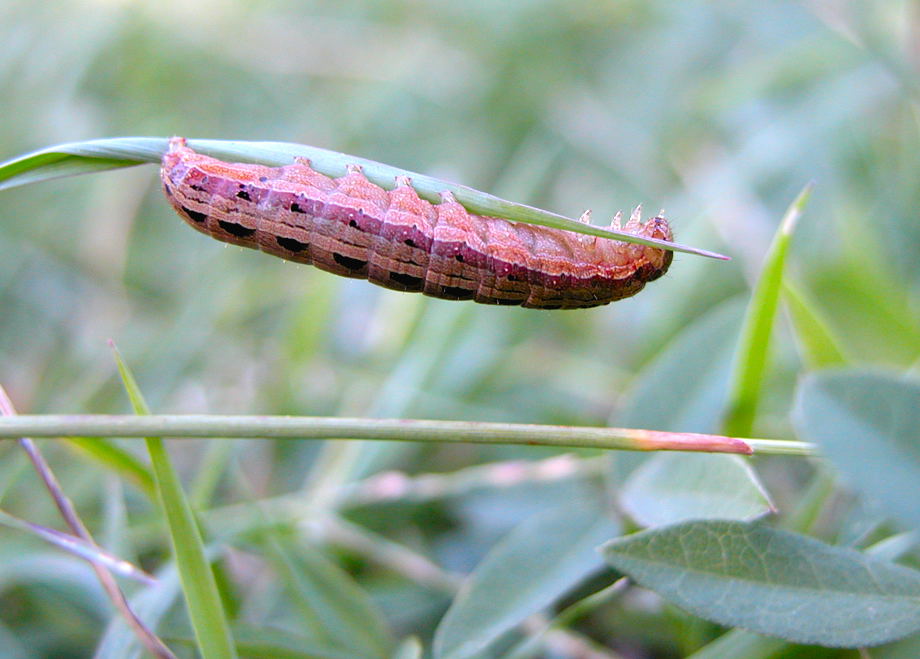
- Armyworm Caterpillar length 30mm
- The Caterpillars of Noctuidae are usually smooth or with very little hairs. They are from small to very large size. Most of them are active at night.
- Some Noctuidae caterpillar are called Cutworms or Armyworms and
others called Semi-loopers. Cutworms live in soil surface.
They bite off young plants at ground level and pull them into their burrow.
Armyworms eat their way across like an army on the march. Semi-loopers loop their bodies when moving as the Lopper
caterpillars of the family GEOMETRIDAE.



- Caterpillars in family Noctuidae
- Most
Noctuid caterpillars pupate in soil but some pupate under leaf of their food plant.
- The adult moths mainly fly at night although there are
also the day flying species. All of them are strong fliers. They are from small to
very large size. They usually feed on
nectar from flowers, some feed on ripe fruit. They usually have strong
proboscis. Their antennae are usually simple, held back under wings when rest.
Usually they are dull brown in colour, but some have colourful hindwings. Day
flying species are colourful.
- Noctuidae is the largest family of moths. We found many of them in Brisbane and listed as follow.
Subfamily CATOCALINAE - Semi-loopers and Owl Moths
- Moths in subfamily Catocalinae are usually medium to large in size. Most of them have robust body and broad wings. Some of the them have brightly coloured hind wings which are normally covered. Some other have eye-shaped patterns on their wings.
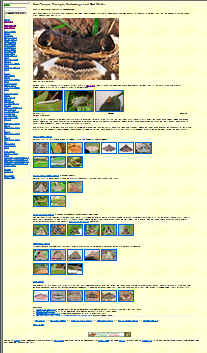
- The caterpillars in this subfamily Catocalinae are usually smooth, lack of hairs, long and slender. Some of them have prolegs of segments 3, or 3-4 missing and known as semi-looper, move in looping action. They pupate in a rather scant silk cocoon.
Subfamily ACONTIINAE

- The moths in this subfamily are small in size. The caterpillars are usually slender semi-looper.
Subfamily EUTELIINAE

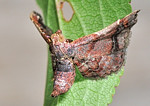
Subfamily NOLINAE - Small Grey Moths

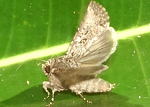


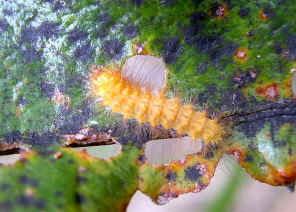
- The moths in this subfamily are small in size. Most of them are grey in colour. Caterpillars have three pairs of prolegs, the one pair on abdomen 3 is missing. They pupate in cocoon formed by silk and plant bark with the shape of upturned boat. The moth comes out from a vertical slit at the board end.


- The moths in this subfamily are medium in size. Caterpillars have four pairs of prolegs.
-
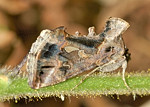




- The adults of this two subfamilies, ACRONICTINAE and AMPHIPYRINAE, cannot not be readily separated from each other. Sometimes this two subfamilies are treated as one subfamily. They usually have stout body.



- Caterpillars in this two subfamilies are called Cutworms and some called Armyworms. Cutworms live in soil surface. They bite off young plants at ground level and pull them into their burrow. Armyworms eat their way across like an army on the march.
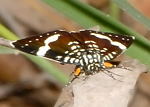
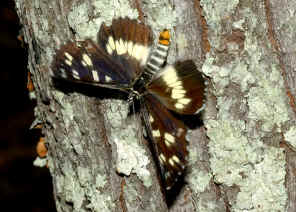


- Moths in this subfamily are medium in size. They are active during the day time. Most of them are in black and white colour, some are very colourful, flying around flowers and may be mistaken as butterfly. This subfamily was treated as family Agaristidae. Caterpillars are also colourful and feed openly during the day. They pupate under bark, in rotting wood or in soil.


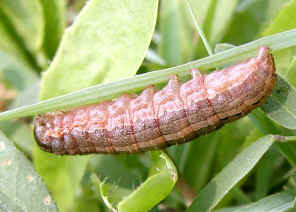

- Moths in this subfamily are medium in size, have stout body covered with long hairs. Their legs are without spines. Caterpillars of many species in this subfamily feed on grass (Poaceae). They have four pair of prolegs. Most have thick lines along the body. They hide during the day and feed at night. They pupate in soil.




- Moths in this subfamily are medium in size, usually with stout body clothed with long hairs. Caterpillars usually feed on flower bud, fruits and foliage. They pupate in a cell in soil.
- Reference:
- 1. Insects
of Australia, CSIRO, Division of Entomology, Melbourne University
Press, 2nd Edition 1991, p910.
- 2. Moths of Australia - I. F. B. Common, Melbourne University Press, 1990, p443.
- 3. Family NOCTUIDAE - Australian Biological Resources Study, Department of the Environment and Water Resources, 2008.
- 4. A Guide to Australian Moths - Paul Zborowski, Ted Edwards, CSIRO PUBLISHING, 2007, p188.
- 5. Northern Territory Insects, A Comprehensive Guide CD - Graham Brown, 2009.
[ ACONTIINAE ] [ EUTELINAE ] [ PLUSIINAE ] [ CHLOEPHORINAE ] [ ACRONICTINAE ] [ AGARISTINAE ] [ HADENINAE ] [ HELIOTHINAE ] [ Unknown Noctuid ] - Back to Top
Subfamily CHLOEPHORINAE
Subfamily PLUSIINAE
Subfamily ACRONICTINAE
Subfamily AGARISTINAE - Dayflying Moths
Subfamily HADENINAE
Subfamily HELIOTHINAE
Unknown Noctuid Moths and Caterpillars
This page contains moths and caterpillars that yet to be identified. Please advise if you known what are they.
